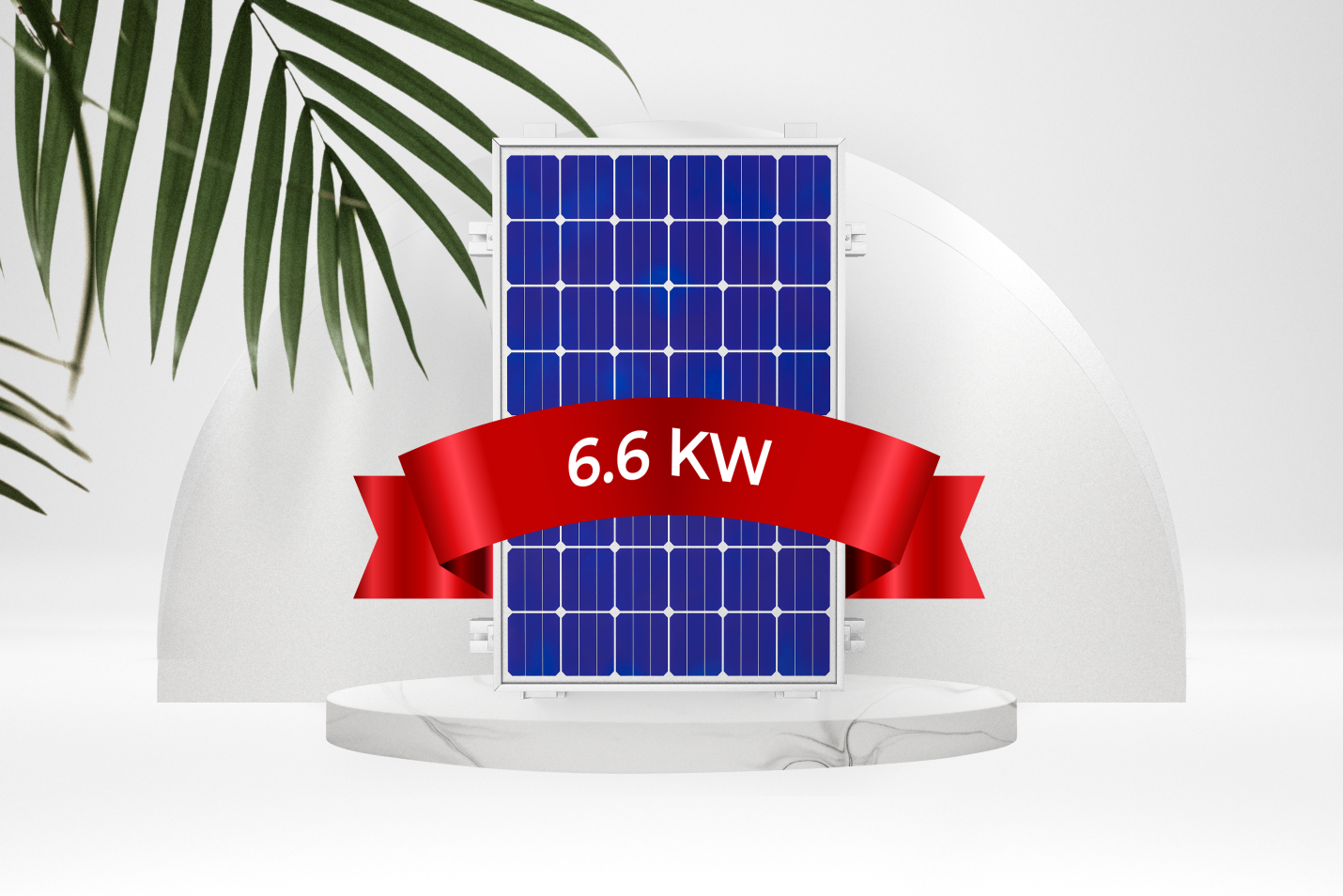
In Western Australia, 6kW (and 6.6kW) solar power system installations will be relatively widespread in 2023, partly because of the continuing decline in the price of solar energy components, the still-generous subsidy, and feed-in tariffs.
These setups may feature 6kW or 6.6kW of solar panels but only a 5kW inverter; for further information on "oversizing," read the notes below.
The size (output) of the solar panels utilized in the installation will determine that. A 6.6kW solar system, for instance, would have 15 modules, or a little over 6kW, if 415 watt panels were utilized, or 18 for a 6.6kW array (a little under).
For a 6kW solar power system installation, approximately 29.7 square meters of adequate rooftop space will be needed based on a panel measuring around 1.8 meters by 1.1 meters (or a bit more than 31.7 square meters for 6.6kW). Based on 415 Watt panels, here is an approximation of how much room 6kW takes up.
Installation location, solar panel orientation, and component quality are all important factors, but on average, a 6kW PV system should provide more electricity than the typical Western Australian family needs each day, or about 24 kilowatt-hours.
Remember that you will receive feed-in tariff payments for any excess electricity you produce, and there may be instances in which the extra power provided by a 6kW system can significantly lower your daytime peak electricity prices (for example, costs associated with summer air-conditioning). Keep in mind that in a system this scale, self-consumption is essential to getting the most out of it.
Early in 2023, the price of a 6kW system with high-quality parts and expert installation will typically vary between $4,500 and $6,500. The solar subsidy is taken into account in this price range.
If everything goes according to plan—you have a solid installation, you paid a fair price, and you consume a sizable amount of solar energy—you should see a simple payback period of about 5 to 6 years. To obtain a better idea of the returns, utilise our solar calculator.
If you can find affordable solar financing, you might also be able to start with a positive cash flow and spend nothing (or very little) upfront.
But wait, think a little bigger – think 6.6kW
While the installation of 6kW systems has becoming more common, intelligent Western Australians are adopting 6.6kW or even larger solar systems.
Please understand that you should purchase at least a 5kW inverter and 6.6kW of solar panels if your home is on a single phase energy supply, which is the case for the majority of Western Australian households.
Why 6.6kW of solar panels?
This may appear to be an unusual number that I chose at random. In general, a 6.6kW design offers excellent value in terms of kilowatts for your money. And according to all the calculations I've done, a 6.6kW solar system will offer you a fantastic return on your investment if you're receiving a respectable feed in tariff (8c or more per kilowatt hour).
About oversizing solar systems
"Oversizing" refers to installing solar panels with a capacity greater than the inverter's. I strongly advise it because it's pretty common these days, completely safe, and won't affect the inverter. You'll receive the highest level of incentive available because Western Australia's solar subsidy (still frequently referred to as the "solar rebate") is based on panel capacity rather than inverter size.
A 5kW inverter? Why not 6kW?
Aside from the possibility that a 5kW inverter is less expensive than a 6kW inverter, solar panels rarely generate as much power as their quoted capacity for a variety of reasons, with temperature being a significant one. On a 25°C day, the majority of solar panels lose about 10% of their rated power, and more if it is hotter - yet Western Australia is accustomed to hot weather.
Additionally affecting output are wire losses and dirt and dust on the panels. In other words, by pairing a 5kW inverter with 6kW (or 6.6kW) of solar panels, you'll actually be assuring the inverter operates more frequently at the performance level for which it was intended.
Utilizing a 5kW inverter is also highly recommended because this is the largest capacity that some Network Service Providers permit to be linked to the grid.
What’s the price of a 6.6kW solar system?
A high-quality 6.6kW solar system will cost between $4,500 and $6,500 in the early 2023, again depending on the components chosen and the installation's specifications.
Therefore, if you assume a module capacity of 415 watts, you'll be obtaining 2 more panels for about $300 more. Aside from the effect of the subsidy, the extra panels are so inexpensive since the installer is already on-site and adding a few extras to the system doesn't require much work.
So why not go even larger and add more solar panels?
Aside from the occasionally restricted rooftop space, installation requirements only permit a maximum 133% overflow of panel capacity compared to inverter capacity; 5kW times 133% equals 6.65kW. In order to stay within the permitted oversizing limit, aim for a system that is as near to 6.65kW as you can get it. However, do not go even one watt over.
Getting quotes on 6kW solar power systems
Solar panels are an expensive purchase, even with the subsidies, and there are good installers and bad installers in any trade.
You're undoubtedly in the correct place if you want to go solar and are seeking for a pricing for a 6kW (or 6.6kW) system. Use our free service to request up to three solar quotes from local installers that I've personally chosen and trust to design the system that best meets your requirements and conditions.